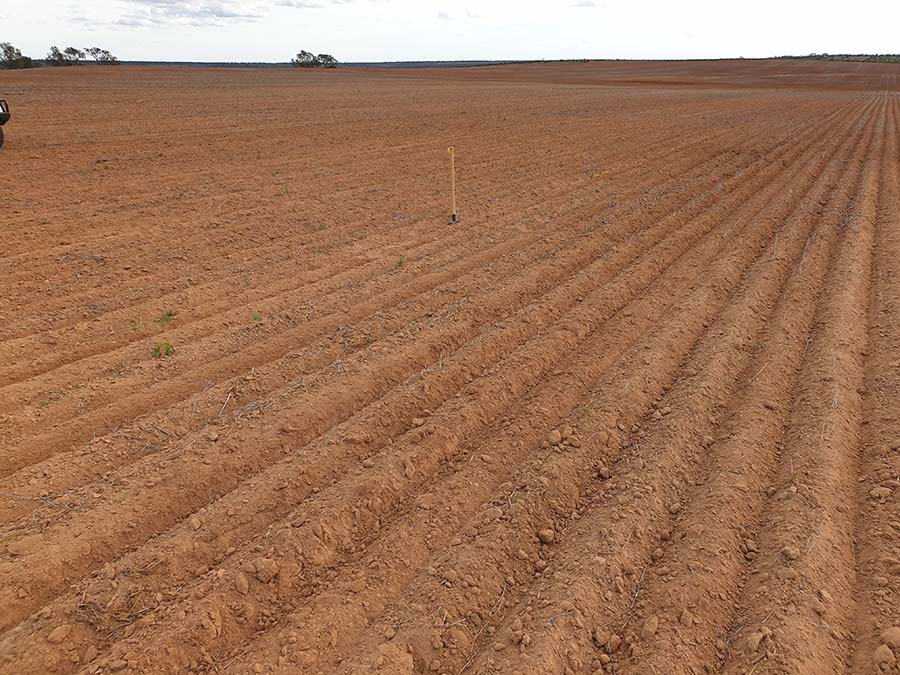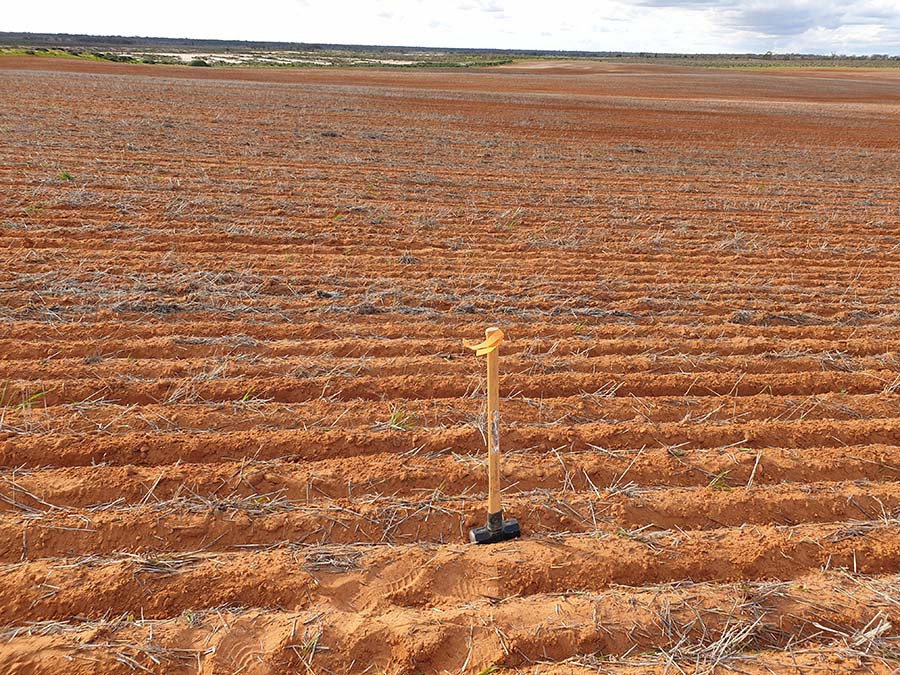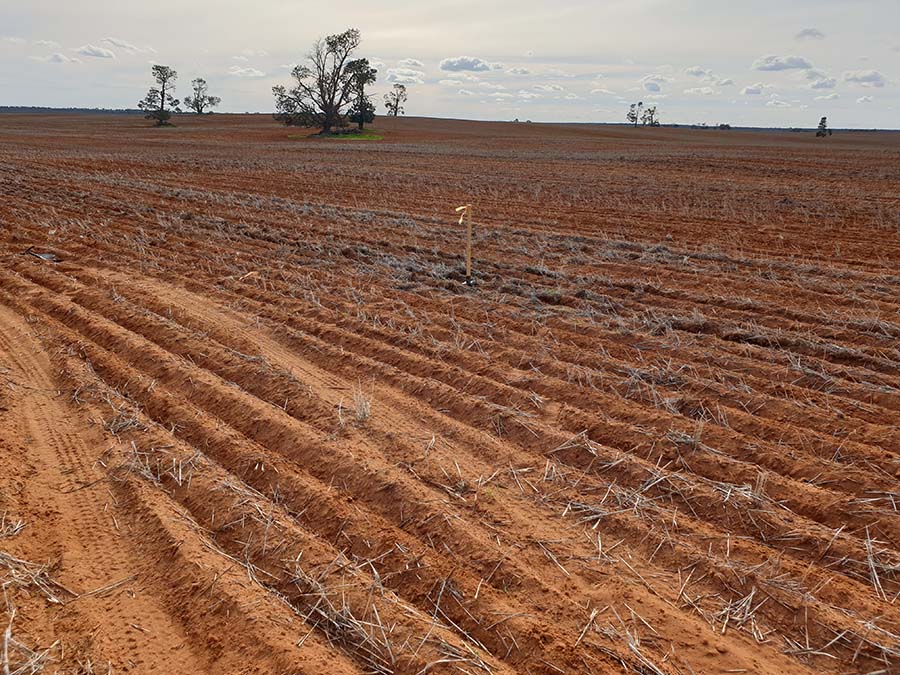Snapshot
Grower: Ben Pollard
Location: Wentworth, NSW Mallee
Farm size: 2,200 Ha cropping land; 30,000 Ha sheep station
Enterprise: Continuous cropping and grazing
Growing season rainfall: 200mm annual (120mm GSR) - Wentworth
Soil type: Deep sands to good fertilse loams over clays, interspersed with poor producing marly loams
Cropping program: 75% cereal and 25% pulses
Seeding system: No-till farming, Seed Hawk Air Drill, deep knife points and sectional control and variable rate capacity.
Ben Pollard is a sheep farmer who crops a small area of farmland 40 kilometres west of Wentworth in NSW. While livestock is Ben’s primary enterprise, cropping adds an important and profitable element to his farm business.
Soil erosion is a significant concern for Ben, particularly following the drought experienced in 2018 to 2019, where Ben suffered devastating soil losses due to wind erosion on both his sandy soils and poor marly loams.
“In 2019 we were just trying to get cover, but the vermin came in and ate it and it blew away again and again, worse than 2018,” Ben says.
Reflecting on the 2018-19 drought, Ben has identified several responses that now govern his decision making around his cropping land to reduce and prevent future wind erosion damage.
Soil cover levels are critical
If the most vulnerable areas of paddocks have less than 50 per cent soil cover in the previous September, then they are at high risk of baring out and blowing if the following season is poor. Under these conditions, Ben will be on high alert in preparing to implement grazing management strategies. Satellite imagery analysis over the previous seven years suggests that 60% soil cover in winter is a benchmark to aim for in these environments.

Soil cover of six per cent on poor producing marly loam flat after seeding in May 2022. Photo: Supplied.
The marly loam flats are the most vulnerable to grazing through poor seasons as they cannot produce or maintain adequate soil cover. In 2021 they recorded 32% cover in March and only 16% crop residues by December. This further reduced to six per cent by seeding time in May 2022. By contrast, the sandy soils in the paddock started with 69% in March, increasing to 74% by December and maintaining very safe levels of 52% cover at seeding 2022 (below), due to Bens’ excellent conservation farming practices.

52% soil cover on sands after seeding in May 2022. Photo: Supplied.
Make sowing decisions based on summer and autumn rainfall
Ben’s erosion risks are greatly reduced when he has received at least 50mm of Jan-March rainfall. If summer rain is insufficient, then Ben wants to receive 25mm in April/May before he is confident of putting in a crop. It is important to get a weed germinating rain and knockdown herbicide control by mid-May as Ben considers dry seeding too risky.
Ben’s seeding window is between Anzac Day and not beyond the June long weekend. If sufficient rain has not come by June, Ben now considers it far too costly to ‘just stick it in and see how it goes’. When Ben decides not to sow, he leaves paddocks to volunteer growth and only grazes if the season allows.
With sufficient rainfall in May, Ben will consider Clearfield cereals to achieve weed control, so it is essential he has this seed on hand. It is also important he doesn't over-commit and spray too many paddocks of Clearfield varieties, as this can greatly limit his future options if he experiences another run of dry years.
Ben uses a full no-till cropping system on 30cm row spacing with a 3-5cm seed spread, creating strong furrows with press-wheels to collect and preserve more moisture around establishing seedlings. Ben plans to move to double shooting his fertiliser, placing 80% below the seed. Topdressing of nitrogen is only applied opportunistically in seasons when there has been an excellent start to the season and there is good subsoil moisture to take crops through spring.
Control summer weeds
Where Ben gets good summer rains, he tries to preserve as much of that stored moisture as possible through good summer weed control. Ben enhances this by having a boom across the front of tractors and double knockdown jets behind the back tyres to overcome application issues with dust.
Ben will control weeds even in failed crops over summer, as keeping them for ground cover inadvertently always leads to greater soil surface degradation with mounding tending to occur around weed residues on prone soil types.
Where do pulses fit?
Continuously cropping paddocks has helped Ben build his soil health and maximise production. He uses pulse break crops or vetch once every four years to help manage weeds and diseases, build soil fertility and minimise exposure to erosion risks.
While Ben has traditionally sown peas, they are more impacted by frost, can be difficult to harvest and leave only weak, poorly anchored residues behind offering limited soil protection. Vetch provides excellent grazing and good N-fixation but presents some weed control issues. Ben’s current approach is to:
- Only grow pulses into strong standing stubbles with at least 50% ground cover
- Only sow peas in a north/south direction. This maximises harvestability as prevailing winds shape plant growth patterns
- Avoid using lifters when harvesting peas, as they tend to cause pea stubble to move, roll and bunch, resulting in lumpy paddocks as wind blows
- Very lightly graze pulse stubbles - just to pick up excess grain.
Livestock and grazing
Ben aims to graze cereal stubbles straight after harvest at 2.5 DSE/ha for six to eight weeks, making the most of good quality, fresh straw. He has established extra water points within paddocks to get sheep to graze paddocks more evenly.
He monitors erosion prone paddock areas to know when to remove stock, making sure a high level of standing stubble in maintained, as once it is flattened, wind can move it around, creating uneven surfaces. When sheep start roaming into saltbush or bluebush areas it is an indication that they have got all they want out of a paddock, and they should be moved on.
With Ben’s key aim of maintaining at least 50% soil cover at all times, he will reduce grazing times in poor seasons. Through drought years, he avoids grazing stubbles altogether.

Sowing into good stubble cover in 2021. Photo: Supplied.
The infestation of high wildlife and vermin populations during extended periods of drought is the biggest uncontrollable threat to Ben’s valuable topsoil, he firmly believes that by developing his soil preservation management strategies he's far better placed to ensure a productive and sustainable future for his intensively cropped land.
Watch:

























































